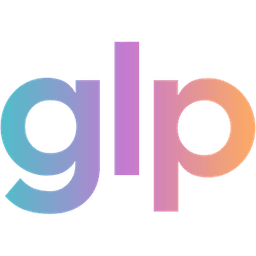Halloween Candy Cravings & GLP-1: What Science Reveals
Author
glp winnerDate Published
- Twitter
- Facebook
- LinkedIn
- Instagram
- Copy Link

Every October, it feels like candy multiplies overnight. There’s a bowl at the office, a bucket by the door, and the bag you swore you bought “for the kids” (but already dipped into). The season turns into a nationwide experiment in temptation.
If you’re taking a GLP-1 medication — or just curious about how appetite suppression actually works — Halloween isn’t just a holiday. It’s a crash course in how cravings, brain chemistry, and environment test you.
In this post, we’ll cover:
- What sugar really does in your brain
- How GLP-1s affect cravings and appetite
- Why Halloween is more than just one candy-filled night
- Real-world strategies to keep candy from running the show
1. Sugar, Dopamine & the Brain’s Reward Circuit
Sugar isn’t just sweet — it’s sneaky. When you eat candy, your brain doesn’t just register taste. It kicks on the same reward circuits that light up with other powerful pleasures.
Here’s what the science shows:
- Sugar triggers dopamine release. Eating sweets causes dopamine (your brain’s “feel-good” chemical) to spike, especially in areas linked to motivation and reward (PubMed).
- Repetition builds reinforcement. In animal studies, bingeing sugar over and over creates reward patterns that look a lot like addiction (PubMed).
- Multiple pathways are involved. Sugar can activate both dopamine and opioid systems in the brain, making it a double-whammy for cravings (PubMed).
- Debate still exists. Some researchers say “sugar addiction” isn’t the same as drug addiction, but the overlaps in brain activity are real (The Guardian).
This is why candy feels so hard to put down. Even the sight of a wrapper can reactivate those circuits. Your brain essentially “remembers” that candy equals reward and whispers: “just one more.”
Think of it like Pavlov’s bell, but instead of dogs drooling, it’s your brain nudging you toward the candy bowl.
2. How GLP-1 Medications Change the Craving Equation
GLP-1 (short for glucagon-like peptide-1) is a hormone that already lives in your body. It helps regulate appetite, slows digestion, and balances blood sugar. FDA-approved GLP-1 receptor agonists — the medications people hear about for weight loss and diabetes — build on that natural system. Check out GLP Winner FDA medication listings for Wegovy, Mounjaro, Ozempic and Zepbound here.
Here’s how they affect cravings and appetite:
- Slower stomach emptying. Food stays in the stomach longer, which extends feelings of fullness (PubMed).
- Central effects. GLP-1s also act on the brain, influencing regions that control hunger, satiety, and reward (PubMed).
- Reduced food cravings. In one semaglutide trial, people reported lower hunger and less desire for high-fat or high-calorie foods (PubMed).
- Weaker reward response to food cues. Imaging research suggests GLP-1 treatment may blunt brain reactions to food anticipation (PubMed).
- Overall appetite improvements. A systematic review found GLP-1s consistently improved measures like satiety and reduced food intake (PubMed).
This doesn’t mean cravings disappear. Think of GLP-1s as a volume dial, not a mute button. Candy still looks appealing — but it feels less controlling.
And a quick but crucial note: all the science above is on FDA-approved, branded GLP-1 medications. Compounded versions are not FDA-approved, and safety or efficacy isn’t guaranteed.
3. Why Candy Season Doesn’t End on October 31st
Halloween isn’t just about costumes and pumpkin carving — it’s the start of the sugar marathon. From October through December, sweets are everywhere: trick-or-treat buckets, Thanksgiving pies, holiday cookies, office parties.
Here’s why this season matters more than one night of fun:
- What you see, you eat. Behavioral research shows that just seeing candy nearby makes people eat more. The brain treats visibility as opportunity (Science Direct).
- Sugar overload can dull dopamine. Overexposure to sugar can make your brain’s reward system less sensitive, meaning you need more to feel the same “buzz” (University of Michigan).
- Habit loops kick in. The brain learns fast: “Candy bowl = reward.” Each repetition strengthens the loop (PubMed).
- Mini-candies, major impact. Fun-sized bars seem harmless, but they’re engineered to be just enough for a reward hit — and easy to keep grabbing (The Cupola).
Halloween is like the first domino in a chain reaction. How you handle it can influence your approach to the rest of the holiday season.
4. Strategies That Actually Help
You don’t need to skip Halloween or swear off treats. Small shifts can make the season a lot easier to manage.
Hide the stash
Out of sight, out of mouth. Candy in a clear bowl on the counter is an open invitation. Keep it in an opaque container or tuck it out of reach.
Eat before the event
A balanced meal with protein and fiber helps blunt sugar’s effects. Trick-or-treating or hitting a party on an empty stomach almost guarantees candy will call your name louder.
Set a candy “budget”
Decide ahead of time: maybe three favorite pieces, and that’s it. This keeps candy fun without letting it spiral.
Add a mindful pause
Before unwrapping, take a 10-second check-in: “Am I actually hungry, or just reacting?” That pause often breaks autopilot.
Pair candy with activity
A short walk, game, or dance session after eating candy helps reset your body and brain. It’s not about “burning it off” — it’s about shifting focus.
Try swaps that still feel like treats
Dark chocolate, dried fruit, or even one “special” dessert can scratch the sweet itch without the same sugar crash.
5. What to Expect (and Not Expect) if Using GLP-1s
GLP-1s plus strategies can make a big difference, but expectations matter:
- Candy will probably feel less magnetic — but cravings won’t disappear completely.
- Stress, social pressure, and holiday routines can still override appetite cues.
- Some people find sweets taste more intense, which makes smaller amounts feel satisfying.
- GI side effects like nausea or bloating can make candy less appealing — but that’s not the purpose, just a by-product.
- Those on GLP-1s are more likely to feel nausea side effects if you do wind up indulging in a bit too much candy than before they were on GLP-1s.
6. The Takeaway
Halloween candy cravings aren’t about weak willpower — they’re about biology. Sugar flips dopamine switches in the brain, and the holiday season throws candy in your path at every turn.
GLP-1 medications can shift the experience: slower digestion, less “food noise,” and weaker reward responses to sweets. But they don’t erase cravings or replace the need for smart strategies.
This year, try combining both: enjoy a few favorite treats, lean on appetite tools, and put a couple of candy-proof systems in place. It’s not about skipping Halloween joy — it’s about making sure the candy bowl doesn’t call the shots.
If you enjoy posts like these, you can subscribe to receive newsletter updates.
Sources
Keep Reading

GLP-1 myths spread fast. Here’s the truth about Wegovy, Zepbound, side effects, “Ozempic face,” and more—backed by trusted sources.

Learn what microdosing GLP-1s really means, what’s known, what’s not, and key questions to ask your doctor before considering it.

GLP-1s may calm food noise and support focus, but they’re not brain boosters. Learn what science says about energy, cravings, and side effects.
